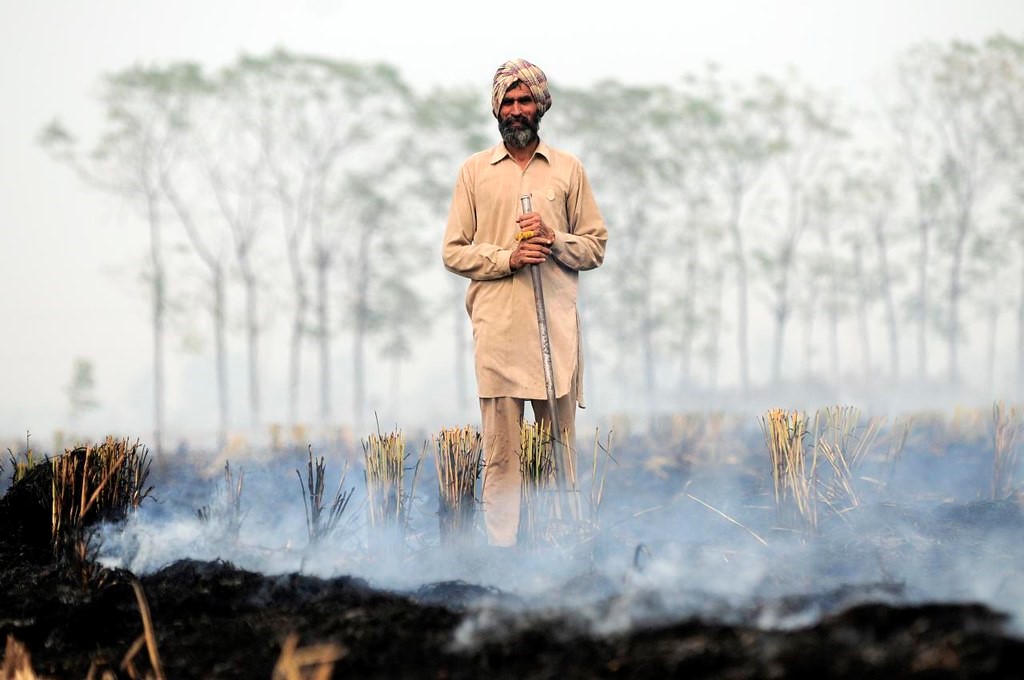Everyone is fascinated by Punjabi songs and their singers. If you choose to watch a Punjabi music video, chances are, you will see the most expensive of cars, clothes and accessories being utilised. Glamour sells in the world of social media. It is a rather cheap way of earning money. In a state in which industrialists are looking to flee and where agricultural output has stagnated, entertainment remains the best employment generator. There is an abundance of singers in Punjab – because producing music videos and earning big bucks from their popularity is an easy job.
And then, the appetite of Indians at large for Punjabi music is very voracious. Punjabi music has a unique sense of music, beats and composition. Punjabi artists have mastered the art of making people groove on any song, whether that be a legit party song, or one of heartbreak, like:
“Taare gin gin yaad ch teri
Main taan jaagan raatan nu
Rok na pavan ankhiyan vichon
Gham diya barsatan nu…Oh ho ho ho”
Punjab’s Economy at an “Oh Ho” Stage
Punjab was among the richest states in India at one point in time. Its per capita income was ranked third across India, preceded only by Delhi and Goa. So, Punjab was practically the richest state in India if the size is taken into account. In 1993, Punjabi on average earned the third-highest income among people from all other states.
Jump to 2009-2010, Punjab had slid to the 10th position. Nine states were able to beat Punjab at the per capita income index within a decade. In 2021, Punjab’s per capita income was the lowest among the 15 states.
Punjab rejected the three new farm laws brought in by the Modi government. But how is agriculture faring in the state these days? Let’s have a look.
The effects of the Green Revolution of the 1960s were quick. Punjab modernised agriculture – breaking away from traditional shackles and methods. According to a study by Indian Council for Research on International Economic Relations, from 1971 to 1986, Punjab’s agriculture grew by 5.07 per cent on average. By contrast, agriculture across India grew at 2.31 per cent, that is, less than half the growth Punjab was registering.
According to ThePrint, from 1986-2005, Punjab’s agriculture grew at 3 per cent, slightly higher than the national average of 2.94 per cent. However, things took a turn for the worse between 2006 and 2014-15. Its output grew by only 1.6 per cent in these years while India averaged 3.5 per cent.
The polling for a new government in Punjab has just concluded. This elections season, political parties of all hues and colours showered promises of freebies on the people of Punjab like it was their last election. They did so with scant regard for the state’s towering debt, which according to recent estimates, has crossed the Rs. 3 lakh crore mark.
Industries in Punjab, meanwhile, have been taken over by politicians. Competition has been killed in entire sectors and monopolies have been established. Punjab, which once prized itself for being the state which paid the highest wages to migrant workers, has today begun suffering an industrial decline.
Read more: 5 Big reasons why Punjab should NOT be allowed to grow rice at all
According to the Department of Industrial Policy and Promotion’s ease of doing business rankings, Punjab fell from 16 in 2015 to 20 in 2017. In the latest rankings (2019), it improved marginally to get to 19. What that means is industries no longer view Punjab as a favourable business destination.
Unfortunately, nobody is willing to fix Punjab’s economic problems. Whoever comes to power will focus on populist measures; while the prime focus of any incoming government should be the immediate revival of the state’s agricultural and private sectors. A clear roadmap on how the state is to be made an investment hub is missing from the closets of all political leaders. Nobody knows how to fix Punjab. The state’s music industry will not be able to drive it until perpetuity.
